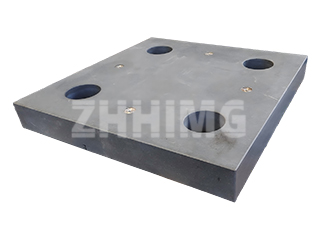In the field of precision optics and metrology, achieving a stable and vibration-free environment is the foundation of reliable measurement. Among all support systems used in laboratories and industrial settings, the optical air floating platform—also known as an optical vibration isolation table—plays a crucial role in ensuring high accuracy for instruments such as interferometers, laser systems, and coordinate measuring machines (CMMs).
Engineering Composition of the Optical Platform
A high-quality optical platform consists of a fully enclosed all-steel honeycomb structure, designed for exceptional rigidity and thermal stability. The top and bottom plates, typically 5 mm thick, are bonded to a precision-machined honeycomb core made from 0.25 mm steel sheets, forming a symmetrical and isotropic structure. This design minimizes thermal expansion and contraction, ensuring the platform maintains its flatness even with temperature fluctuations.
Unlike aluminum or composite cores, the steel honeycomb structure provides consistent stiffness throughout its depth, without introducing unwanted deformation. The sidewalls are also made of steel, effectively eliminating humidity-related instability—a problem often seen in platforms made from mixed materials. After automated surface finishing and polishing, the tabletop achieves sub-micron flatness, offering an ideal surface for optical assemblies and precision instruments.
Precision Measurement and Compliance Testing
Before leaving the factory, each optical air floating platform undergoes a series of vibration and compliance tests. A pulse hammer applies controlled force to the platform surface while sensors record the resulting vibration response. The signals are analyzed to produce a frequency response spectrum, which helps determine the platform’s resonance and isolation performance.
The most critical measurements are taken from the four corners of the platform, as these points represent the worst-case compliance scenario. Each product is supplied with a dedicated compliance curve and performance report, ensuring full transparency of the platform’s dynamic characteristics. This level of testing exceeds traditional industry practices, providing users with a detailed understanding of the platform’s behavior under actual working conditions.
The Role of Vibration Isolation
Vibration isolation is at the heart of optical platform design. Vibrations originate from two main sources—external and internal. External vibrations come from the ground, such as footsteps, nearby machinery, or structural resonance, while internal vibrations arise from air flow, cooling systems, and the instrument’s own operation.
An air floating optical platform isolates both types. Its air suspension legs absorb and attenuate external vibration transmitted through the floor, while the air bearing damping layer beneath the tabletop filters internal mechanical noise. Together, they create a quiet, stable foundation that ensures the accuracy of high-precision measurements and experiments.
Understanding Natural Frequency
Every mechanical system has a natural frequency—the frequency at which it tends to vibrate when disturbed. This parameter is closely linked to the system’s mass and stiffness. In optical isolation systems, maintaining a low natural frequency (typically below 2–3 Hz) is critical, as it allows the table to isolate environmental vibration effectively rather than amplifying it. The balance between mass, stiffness, and damping directly determines the system’s isolation efficiency and stability.
Air Floating Platform Technology
Modern air floating platforms can be categorized into XYZ linear air bearing stages and rotary air bearing platforms. The core of these systems is the air bearing mechanism, which provides near-frictionless motion supported by a thin film of compressed air. Depending on the application, air bearings may be flat, linear, or spindle types.
Compared with mechanical linear guides, air bearings offer micron-level motion accuracy, exceptional repeatability, and zero mechanical wear. They are widely used in semiconductor inspection, photonics, and nanotechnology applications, where sub-micron precision and long-term stability are essential.
Maintenance and Longevity
Maintaining an optical air floating platform is straightforward but essential. Keep the surface clean and free from debris, periodically check the air supply for moisture or contamination, and avoid heavy impacts on the table. When properly maintained, a precision optical table can operate reliably for decades without degradation in performance.
Post time: Nov-11-2025

